The last weekend in April is drawing to a close, and blooms in the garden couldn’t be more abundant. The flowers of redbuds (below, the glossy new leaves of ‘Forest Pansy’ redbud) and dogwoods have faded, though there are a few remaining on dogwoods in the shade, but fringetree (Chionanthus) and ‘Ivory Silk’ tree lilac will be blooming in a few days.
Since the middle of the month we’ve featured the flowering trees and shrubs in the garden, and today we’ll wrap up April with a couple shrubs left out earlier and then some of the blooming perennials in the April garden. 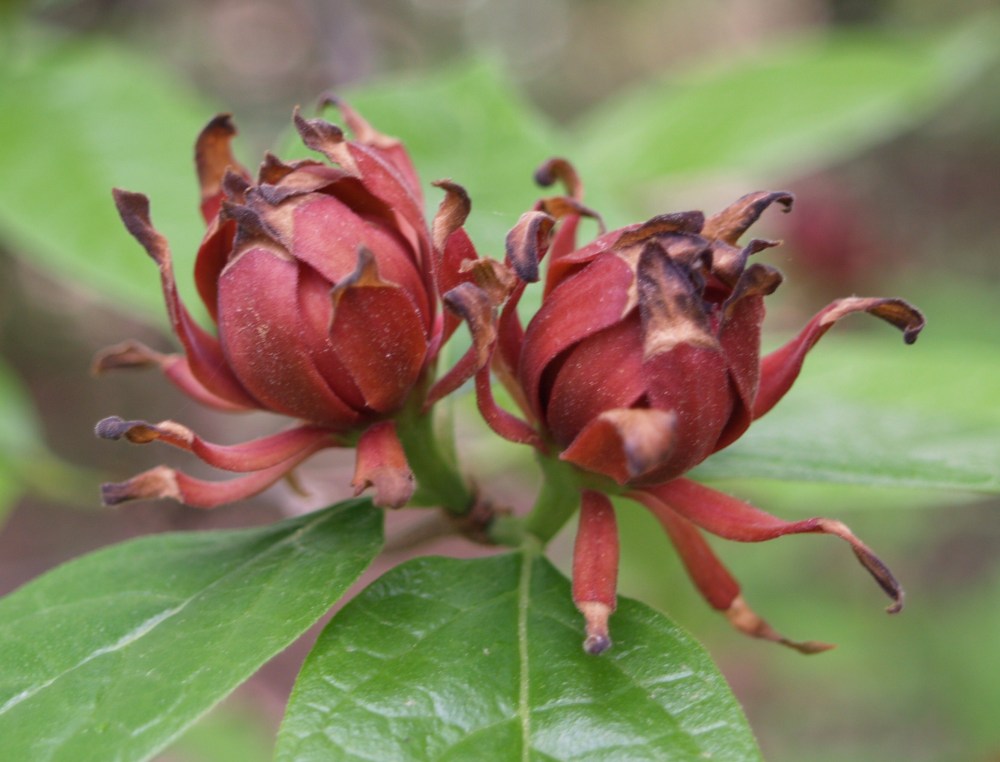 The week past was a busy one for me, and I failed to take my customary daily stroll through the garden even once, so I had not seen that the fragrant reddish-brown flowers of sweetshrub (Calycanthus floridus, above) have opened fully, and nearby the red bottlebrush buckeye (Aesculus pavia, below) is blooming. The buckeye’s bloom stays for only a few days, so I was fortunate to catch it at its peak today.
The week past was a busy one for me, and I failed to take my customary daily stroll through the garden even once, so I had not seen that the fragrant reddish-brown flowers of sweetshrub (Calycanthus floridus, above) have opened fully, and nearby the red bottlebrush buckeye (Aesculus pavia, below) is blooming. The buckeye’s bloom stays for only a few days, so I was fortunate to catch it at its peak today.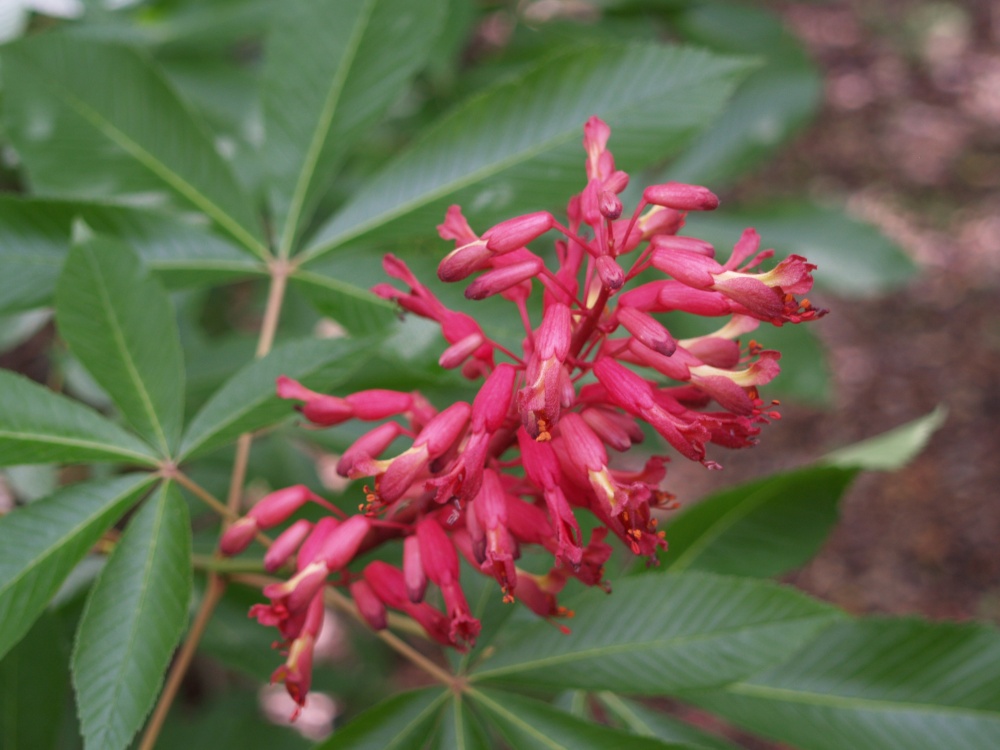
The buckeye is planted in the dry, shady sliver of forest that borders my garden, and though the area has less sun than it would prefer the buckeye grows without complaint. At the far end of the property beyond a spring fed, muddy swale, but also along the wooded border, a seedling is growing next to brambles and miscanthus grasses that have reseeded. Eventually I will clear this area, the brambles and grasses will go, but the buckeye will stay.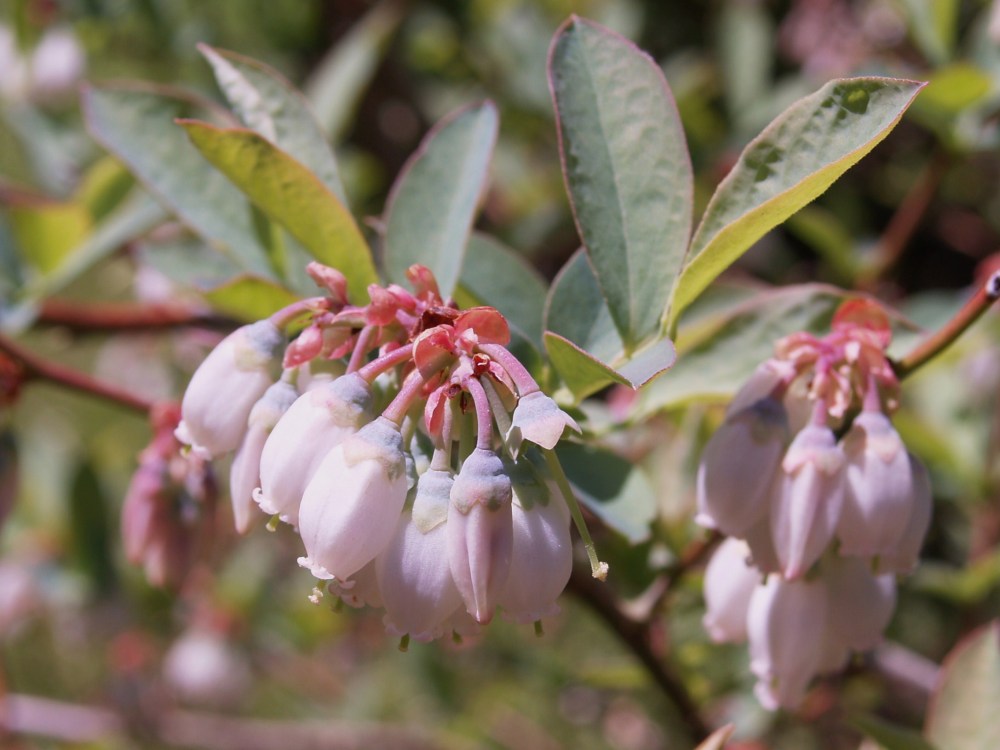
On the near side of the muddy swale, the side that I call the garden, I have planted blueberries (above) in another area that is often damp from runoff that is directed into a dirt bottom pond at the back property line. The blueberries enjoy the frequently damp soil, though I suppose they would not do so well in an area that was constantly wet. I suspect that the area will eventually be too shady, with a gingko and blackgum shading them in several years, but until then there is adequate sun to provide a few berries for the birds.
Fifteen years ago, or perhaps a few years earlier, I had eight or ten magnificently large blueberry shrubs that were salvaged from a farm that was being developed. For ten years there were abundant berries in late June into July, and I enjoyed a handful of warm berries as I walked the garden on early summer evenings. My wife never failed to warn me that they should be washed before eating, but I don’t spray pesticides and it would not be convenient to walk back inside to wash them and then back out again, so I took my chances, and of course I survived to tell the story.
The large blueberry shrubs declined over the years, and then were removed when the swimming pond was excavated. The new bushes are planted at the back of the garden, and they are still too small to provide many berries, so I leave them for the birds and get my berries from the grocer.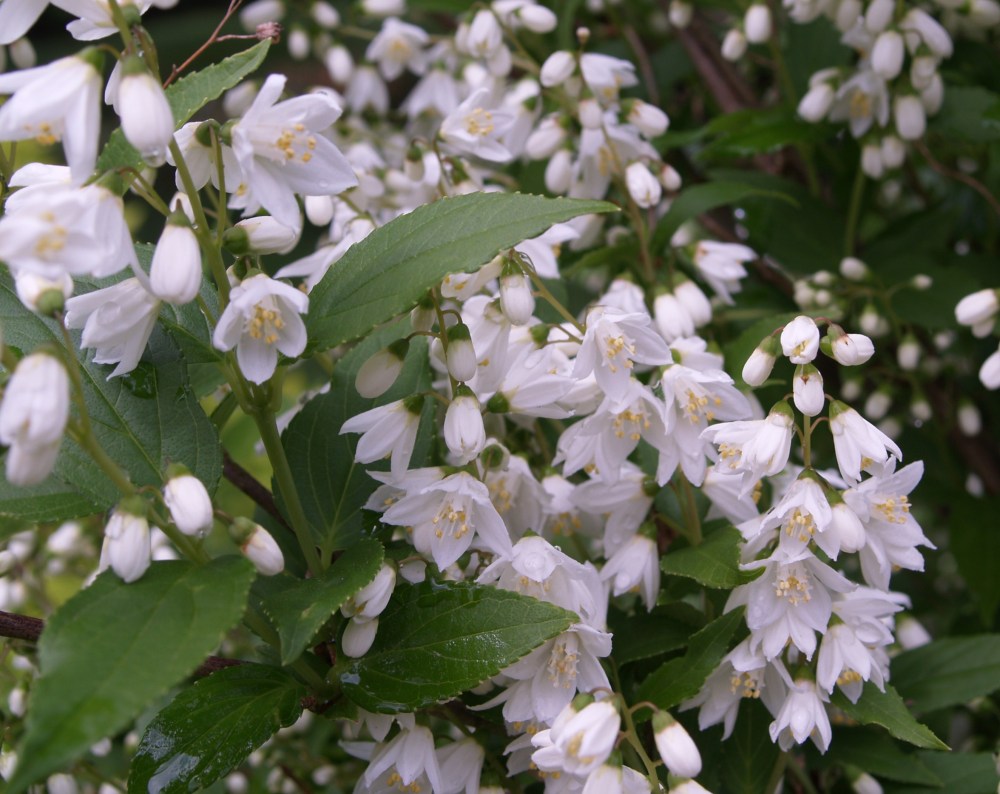
As I surveyed the garden today I realized that more than a few blooming shrubs had been left out, though in fact they have just begun to bloom, and will be enjoyed for a few weeks into May. At the entry to the driveway, along the property border I have planted two varieties of deutzia (Deutzia gracilis ‘Nikko’, above) that are in bloom. I had not intended to plant two varieties, in a small container the spreading Nikko and other, more upright variety appeared identical, and it’s likely that I ignored the nursery tags, but as they have grown they are clearly distinct types. The garden in this area is such a mishmash that the different deutzias are not noticed, but they are delightful and underutilized shrubs with long lasting blooms and carefree bright green foliage through the year. I assume that they are not used more widely because their leaves are deciduous, but they are deserving of greater attention.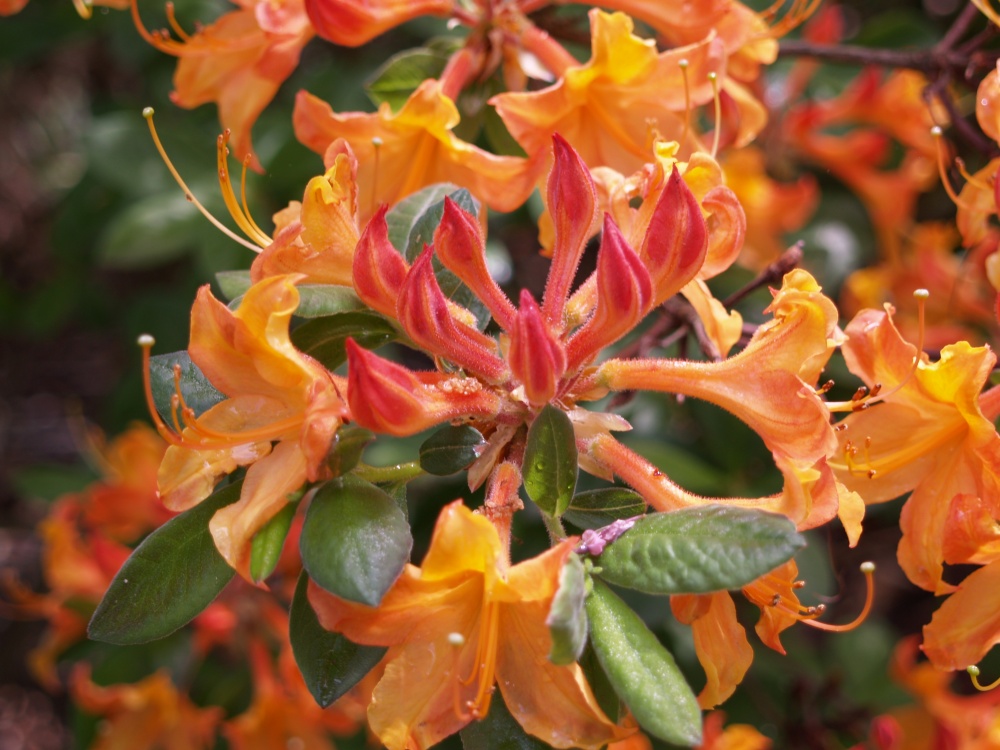
Another underutilized shrub is the deciduous azalea (above). While the evergreen azaleas are hugely popular the deciduous types are barely noticed, though their yellow, orange, and red colors are more striking, and most are quite fragrant. Many of the deciduous azaleas grow tall, and their form is less compact than the evergreens, but they are wonderful plants for the back of the garden, or for planting at the wood’s edge. They are pest and care free in my experience, and should be planted more often.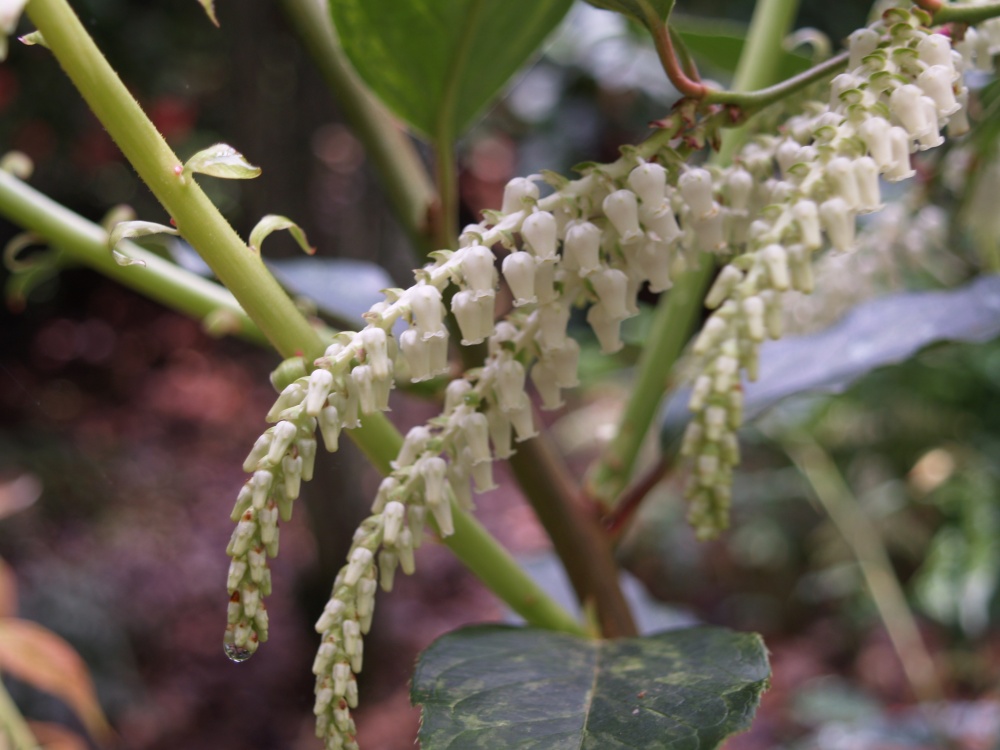
Leucothoe ‘Rainbow’ (above) is also care free, and blooming today, though the lily-of-the-valley type blooms barely stand out from under the arching branches. Rainbow is used most commonly for its variegated foliage, and though I see references in garden magazines that it is used too rarely, I see it quite commonly. I have found that the arching branches can be awkward to use in the garden, requiring more space than one would expect, and so they are often pruned to fit and their natural form is diminished.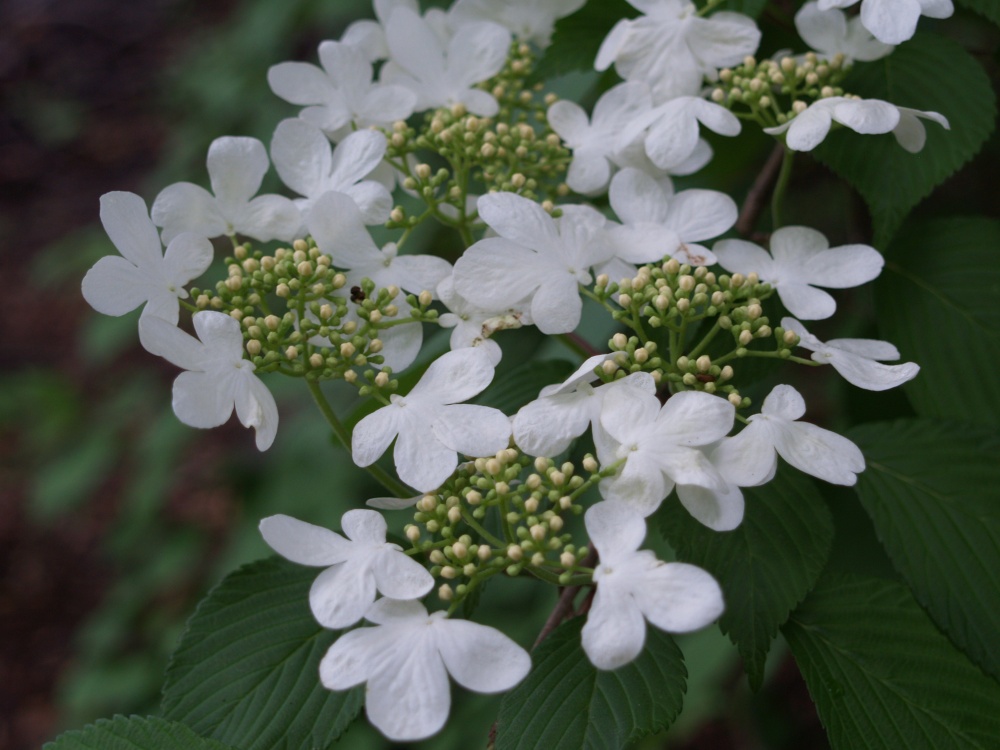
The fragrant viburnums are past bloom, but perhaps the showiest of the the viburnums are the doublefiles, Maresi (above) and Shasta. Though they are not fragrant the large spreading shrubs are often covered in white blooms in late April, and no other viburnum can match its splendid fall foliage color. Viburnums perform best positioned in full sun for the better part of the day, but Maresi in my garden has slipped into nearly full shade over the years, and still it puts on a worthy show.
That is it for the flowering shrubs in the garden, and I fear I have overstayed my welcome for the day, so here we will end for now. I have promised to feature the April blooming perennials, and I will follow tomorrow if time allows with the wonderful euphorbias that have been blooming for several weeks, brunnera, Solomon’s Seal, columbines, and clematis, and then later in the week I’ll feature my favorite Japanese maples, and then the first update of the season on the ponds in the garden.
Dave,
I enjoyed the vicarious stroll through your woods it left me wanting to be home more and not so busy, and ready to visit Meadows Farms for some new ideas!! thanks.